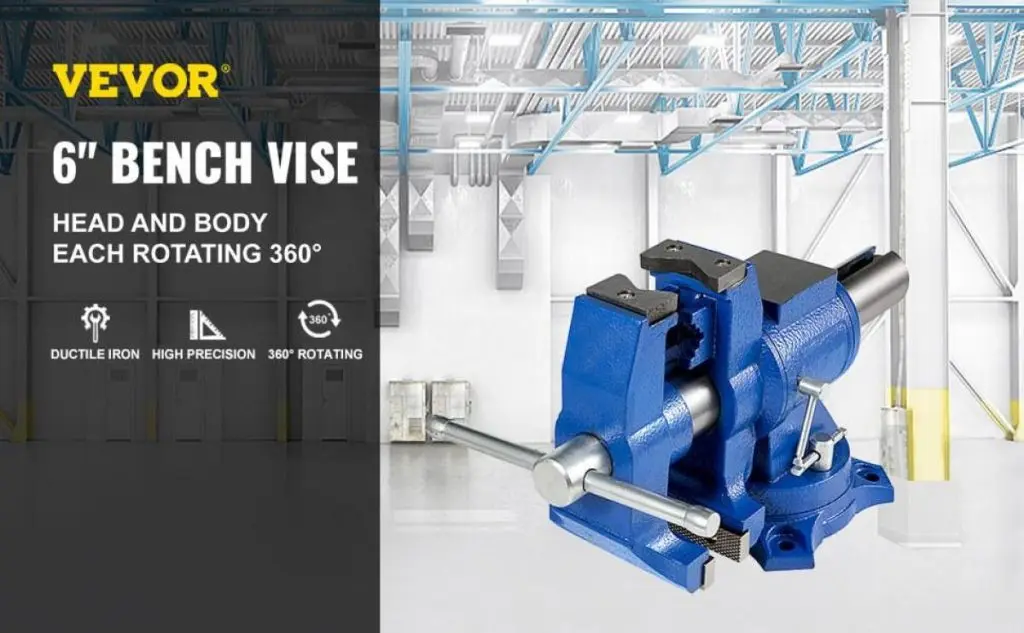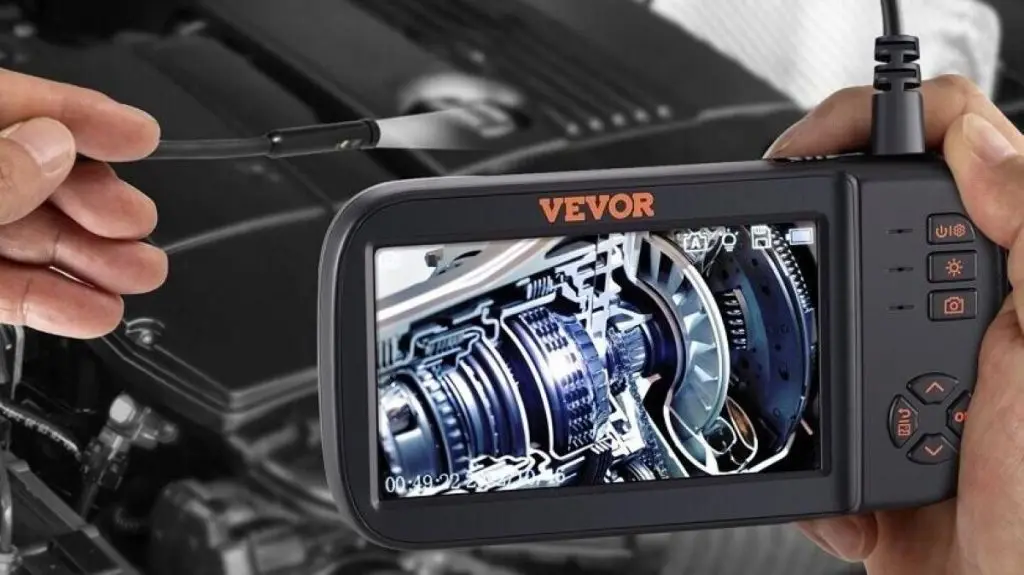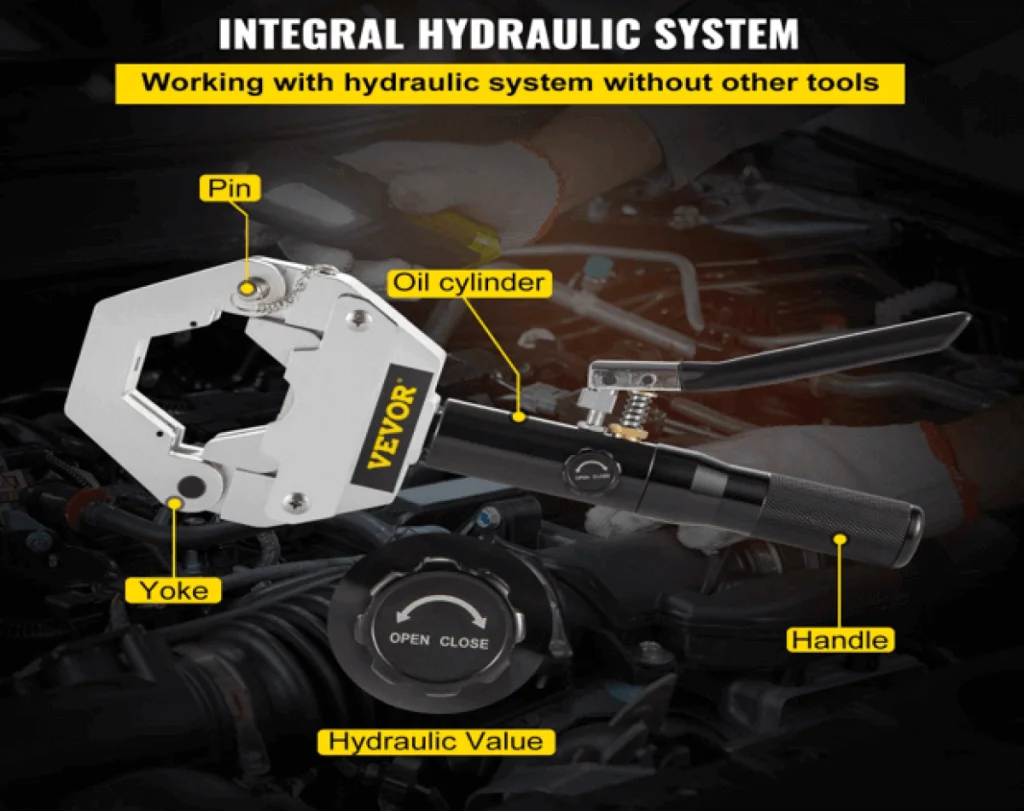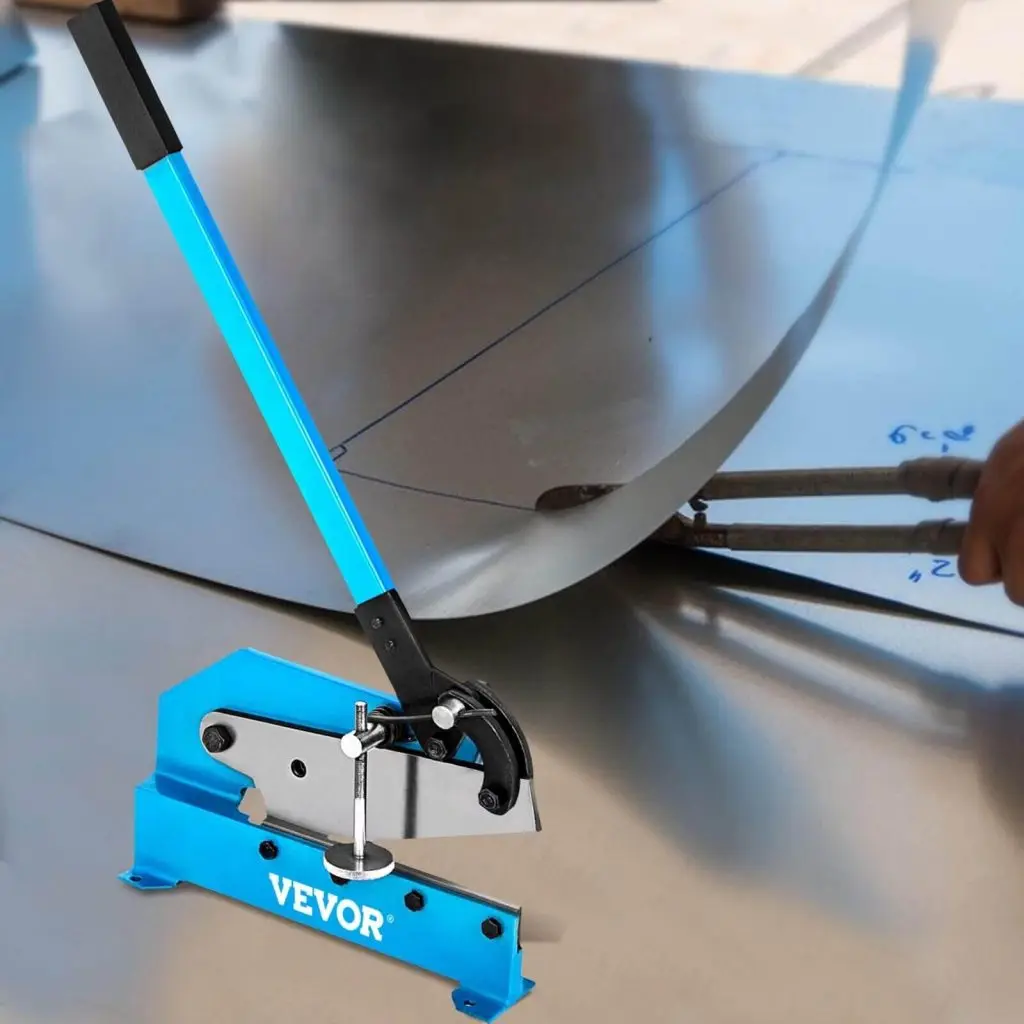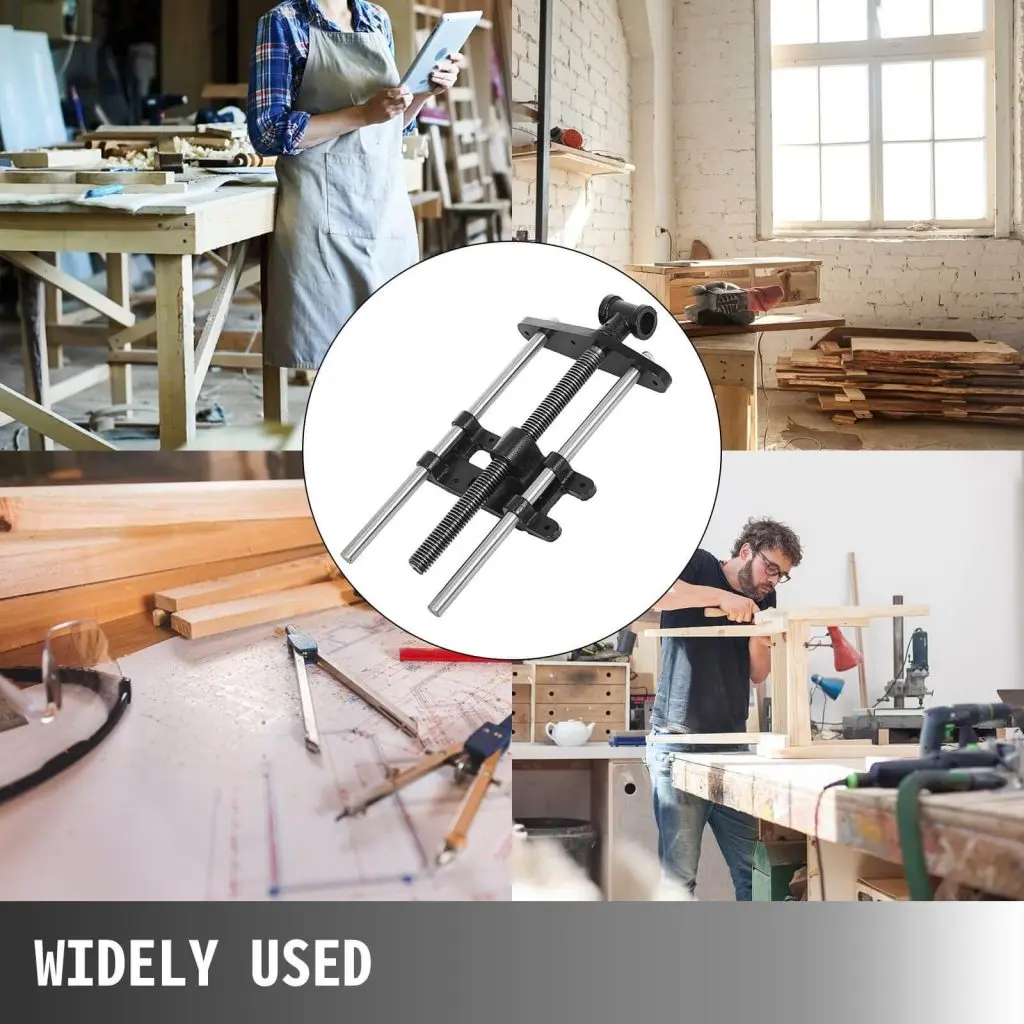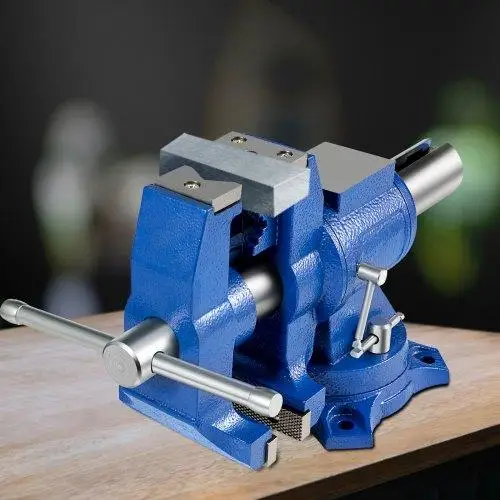
Metal workers and carpenters know how frustrating it is to struggle with a project without a helping hand. It is always very hard to cut, grind or shape a piece of metal alone. Besides, it’s also not safe when trying to do these tasks with bare hands. This is why a bench vise is indispensable in both professional and DIYer’s workshops.
Bench vises are the most common type of vises. They are made of strong metals like steel, ductile iron, gray iron, etc, and are lumpy with a bar on one end that’s used to tighten the jaws. These heavy-duty tools are used to firmly clamp metals of up to thousands of pounds. Using a swiveling base, the metal worker is able to place workpieces well and use the flat metal surface to hammer the tools.
The width of the jaws varies with different vises but most of them have a width ranging from 4.0” to 6.0”. However, if you’re working on heavy-duty equipment like parts of a tractor, you want to take out a 6.0” jaw width.
We’ve marshaled reliable reviews about the best heavy-duty bench vises you can bank on in 2023, what to consider before making a purchase, and so much more. Read on!
List of Top 5 Heavy Duty Bench Vise for 2023
1. VEVOR 6″ Heavy Duty Bench Vise
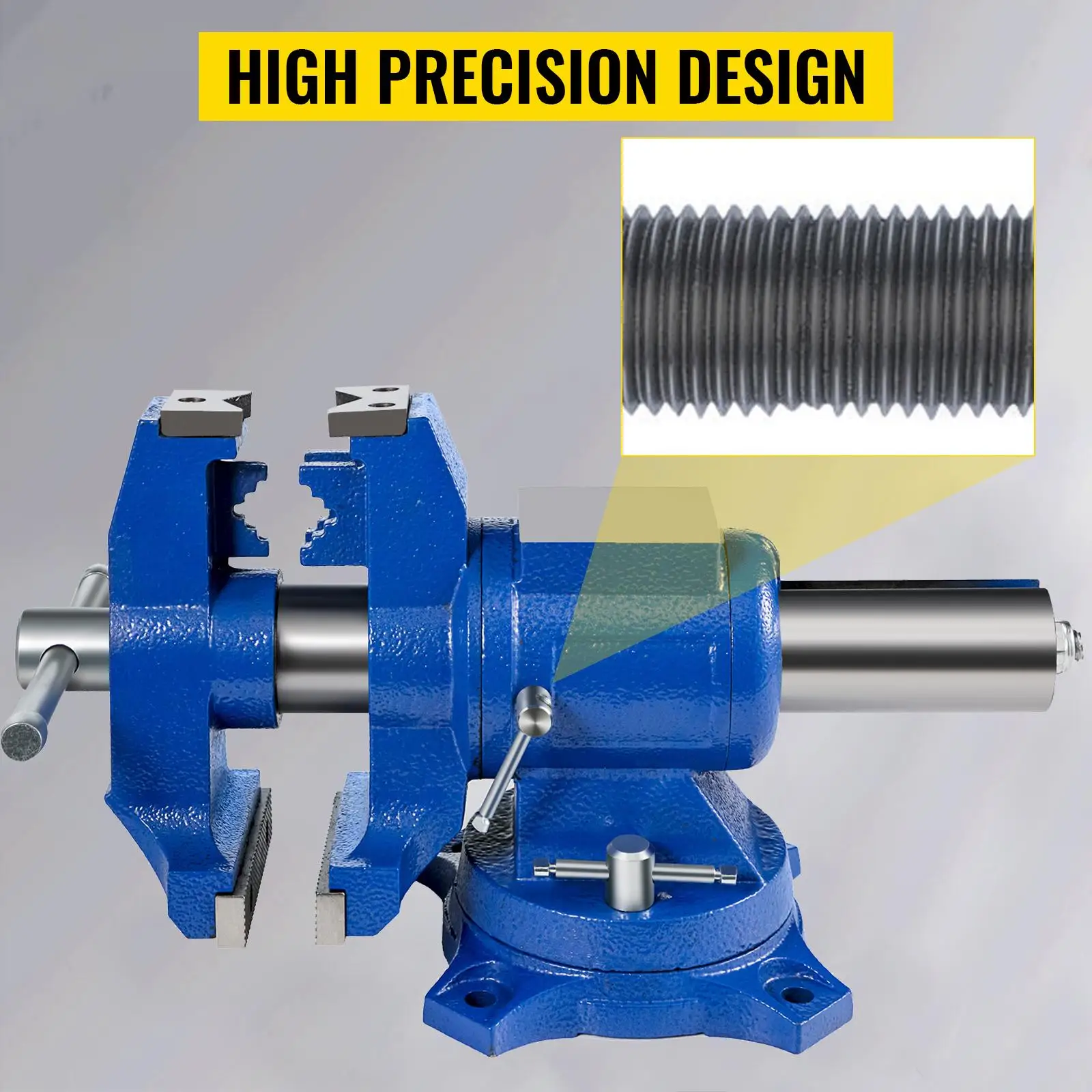
Are you looking for a bench vise that has high precision, tight clamping, and sufficient jaw width, and yet is affordable? VEVOR has got you.
Speaking of price, you can now get any VEVOR equipment at incredibly low rates. Can you imagine getting a $100 price slash? VEVOR gives you such an amazing offer that gives you a chance to win a whopping $100 coupon. All you’ll need to do is to register with VEVOR MONTHLYDY PROECIS and post your DIY tools. In that way, you’ll stand a chance to win this amazing offer. Mind you, this offer applies to the VEVOR 6” Heavy Duty Bench Vise as well as all other VEVOR tools.
Features and Performance of VEVOR 6” Heavy Duty Bench Vise
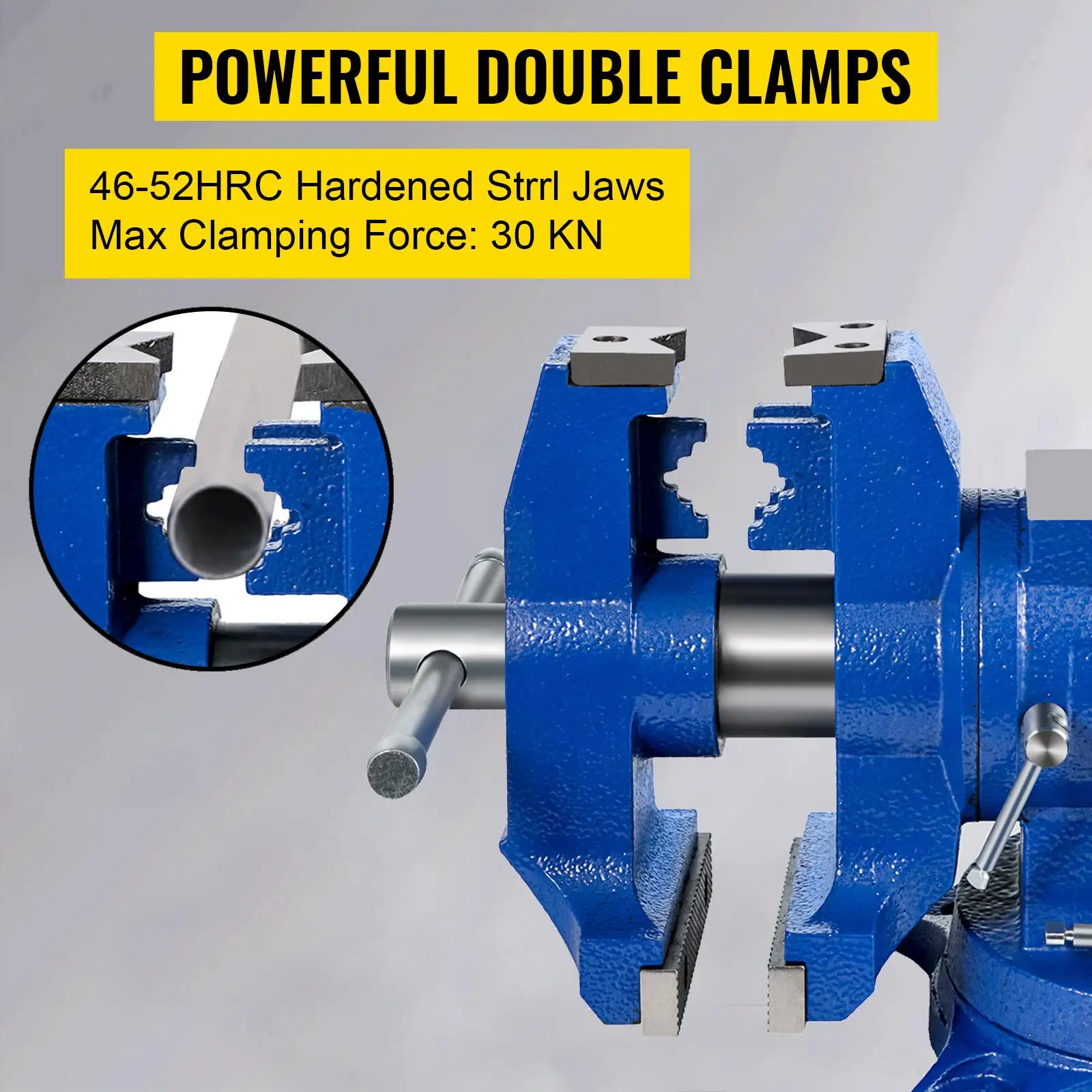
Tough double clamps: The vise features grooved built-in jaws with a huge clamping capacity for a good grip on big, heavy, and rounded metals. With a clamping force of 30kN, a jaw width of 6”, a jaw opening of 5”, and a throat opening of 3”, the vise can help you cut, grind, or fix the heaviest metals.
Durable material: The bench vise is made of heavy-duty ductile iron that extends its longevity. 360-degree rotating base and head: The head of this tool is designed to rotate 360 degrees for convenience and versatility. You, therefore, have equipment that’s not only very flexible but also allows for optimal work placement.
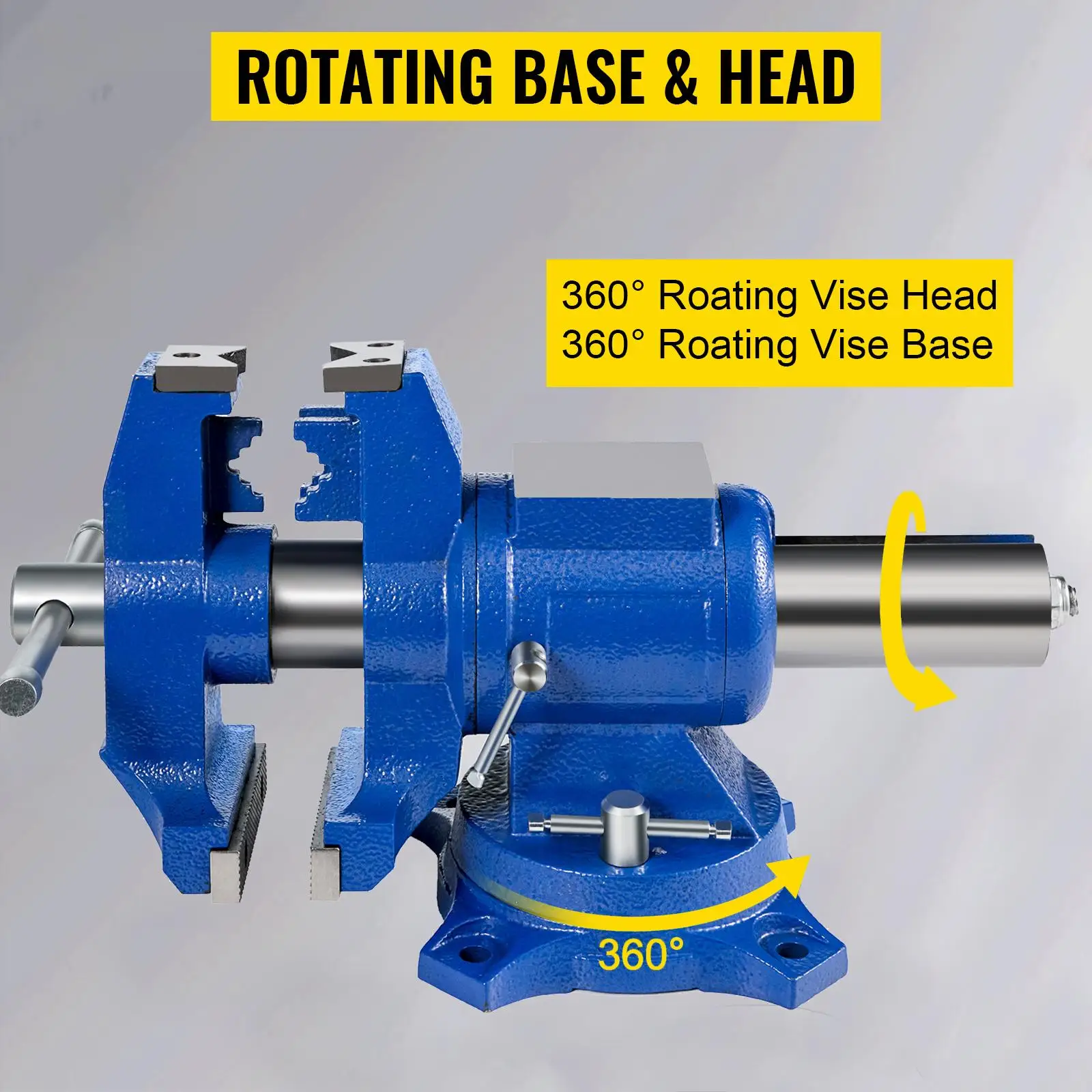
High hardness and precision: The VEVOR bench vise features an upgraded guide rail and polishing lead screw. This is why the tool is able to achieve high precision and hardness. After precise grinding, the vise clamps very fast and requires little effort to tighten.
Variety of applications: Used for grinding, clamping, and fixing metals.
Specifications
- Material: Ductile Cast Iron
- Jaws Width: 6” / 152 mm
- Jaws Opening: 5” / 127 mm
- Throat Depth: 3” / 76 mm
- Clamping Force: 30 kN
- Hardness: 46 – 52 HRC
- Net Weight: 44 lbs / 20 kg
2. YOST 750-DI Multi-Jaw Rotating Bench & Pipe Vise
The bench vise from YOST is mainly preferred for its durability and multifunctional applications. However, it is a little more pricey than we expected.
Features and Performance of YOST 750-DI Multi-Jaw Rotating Bench & Pipe Vise
Premium material: It features a tough 65,000 PSI ductile cast iron for durability. The vise’s material gives it enough compressive power for extreme tightening. With a weight of barely 60.0 pounds, the vise can clamp heavy-duty metals of thousands of pounds.
5” jaw width: This is enough room to hold securely round workpieces of different diameters. This allows the tool to do so much without eating up much bench space. The vise also comes with automatic well-aligned pipe jaws that hold your metals in place.
Specifications
- Jaw width: 5”
- Jaw opening: 5”
- Weight: 59.4 pounds
- Anvil?: Yes
- Throat depth: 4”
- Pipe jaws: 1.3 – 3.5”
3. HFS Heavy Duty Bench Vise
The good thing about this vise is its versatility. It can meet the demands of the toughest environments and serve there for years. Besides, it comes with replaceable jaws which saves you the hassle of getting an entirely new vise in case the jaws break.
Features and Performance of HFS Heavy Duty Bench Vise
Strong material: The vise is made of cast steel for durability even under tough conditions. With a weight of 10 pounds combined with its precision casted body and a coated finish, the vise can stand the test of time.
Large clamping power: The bench vise comes with serrated jaws made of hardened steel to help them hold the cylindrical workpieces in place. Its serrated jaws are better at holding the workpieces excellently and strongly. The tool comes small, hence it doesn’t interfere with your daily bench work
360-degree swivel base: No matter the size of your workspace, this feature allows you to use the vise from whichever direction. Besides, the vise adopts a very easy-to-use vertical hand lever.
Specifications
- Alloy steel
- 360-degree swivel base
- Large anvil
- Serrated steel jaws
- Double-locking base
4. Forward CR60A 6.5-Inch Bench Vise
Are you looking for a heavy-duty bench vise that fits your metallurgy jobs? Forward’s bench vise is not only fit for the job but also has a strong grip and large clamping force.
Features and Performance of Forward CR60A 6.5” Bench Vise
Strong material: This bench vise comes in a tough, wear-resistant ductile iron material that enhances its durability. Unlike other less malleable metals like gray iron, ductile cast iron has great compressive strength, perfectly fitting the purpose of the vise. It is more than 36 pounds heavy which adds to its strength and sturdiness.
6-inch jaw width: With such a great jaw width, the vise is used to clamp, grind or fix differently-sized metals including the huge ones. Combined with a 3.75-inch throat depth, and a 6-inch jaw opening, you’re able to manipulate your heavy metals or just materialize your imaginations.
Highly versatile: Do you ever need to cut, chisel, grind, screw, or tap your workpieces? Bank on this vise to smash all your projects with ease. The bench vise performs all of these tasks in whichever setting, whether at your home workshop or for commercial purposes.
Specifications
- Ductile iron material
- 360-degree swivel base
- 6.5-inch anvil
- Abrasion-resistant
- 3.75” throat depth
5. Olympia 38-605 5.0-inch Vise
The Olympia 38-605 5.0-inch bench vise is a go-to for every DIY enthusiast who loves to keep an eye on their budget. The vise comes with very attractive features yet can fit into any type of budget. What’s more?
Features and Performance of Olympia 38-605 5.0-inch Bench Vise
270-degree swiveling base: The swiveling base allows the metalworker to operate the swivel from a number of directions. This feature is still good, especially in cases where the tool is mounted at the corner of the table.
Replaceable hardened steel jaws: Besides coming in a strong, tough material, the jaws are replaceable. Meaning you can get a pair of jaws when the need arises instead of getting a new vise altogether.
Sufficient jaw width: The vise comes with a 5-inch jaw width, 2.75-inch throat depth, and 3.9-inch jaw opening. This gives you the leeway of working on a variety of metal sizes. This bench vise has a total weight of 21.0 pounds but has a large compressive strength.
Specifications
- Material: Cast iron
- Jaw width: 5”
- Jaw opening: 3.9”
- Throat depth: 2.75”
- Weight: 21 pounds
- Anvil?: Yes
To this point, VEVOR has proven to be the best bench vise that meets all your working needs with a couple of dollars in exchange. Brands like YOST and HFS have great features but are very expensive, hence reducing their value-to-money ratio. Besides, brands like Olympia and Forward are affordable but would not serve you excellently.
Different Types of Bench Vises
- Metalworking vises
Also called a machinist vise, the tool is used to hold metallic workpieces in place for cutting, fixing, grinding, or tapping. While some vises are made of cast steel, most of them are made of cast iron for rigidity, strength, and sturdiness
- Heavy-duty vises
They are used to hold in place extremely heavy metals. Hence, they are made of iron to endure heavy applications. They mostly adopt a 360-degree swivel and can also be called a machinist’s vise.
- Medium-duty bench vises
They are a lower version of heavy-duty vises. However, most of them adopt similar features as heavy-duty vises such as a 360-degree swivel and an in-built anvil.
What Should You Look for When Buying a Heavy-Duty Bench Vise?
1. Material
For heavy-duty vises, only two materials will be relevant: iron and steel. However, cast iron is the most preferred for bench vises.
2. Jaw width
The distance between the jaws matters greatly in defining the quality of your work. Hence, 6 to 7 inches are good for commercial use while 3-5 inches could serve your DIY projects well.
3. Throat depth
This is the distance from the uppermost part of the slides to the uppermost part of the jaws. Heavy-duty bench vises should feature long throat depths so that they can hold a variety of metal sizes.
Are Heavy-Duty Bench Vises Worth It?
Yes! These tools make the work of a metalworker very easy, allowing them to work on very huge metals without much effort. With this tool, you’ll no longer go through the hassle of unsuccessfully holding huge metals in place. Their perfect size for any workbench, amazing features, and multiple functions are worth the investment.
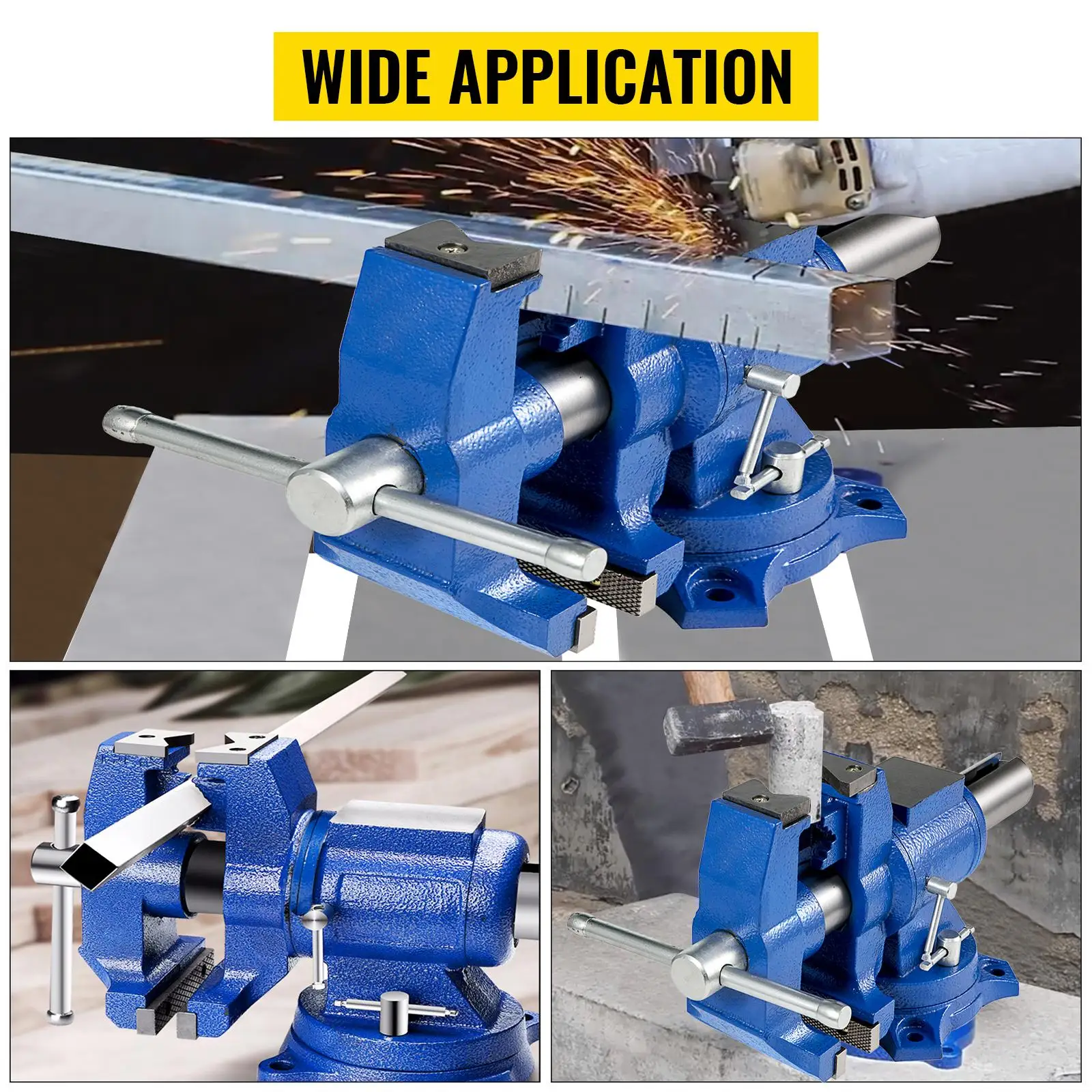
FAQ About Heavy Duty Bench Vises
1) What must I consider when fitting a vise onto my workbench?
You must always look at how easy it is to operate the tool. Be careful to ensure that the top of the vise is at the same height as your elbow.
2) How should I place a bench vise?
The direction of the vise also informs its ease of use. Hence, be sure to place the vise on the left corner of the bench
3) My vise’s spindle is damaged, what could be the reason?
You might want to check the lead screws. If the lead screws are damaged, they affect the turning of the spindle, and the jaws cannot fully tighten.

